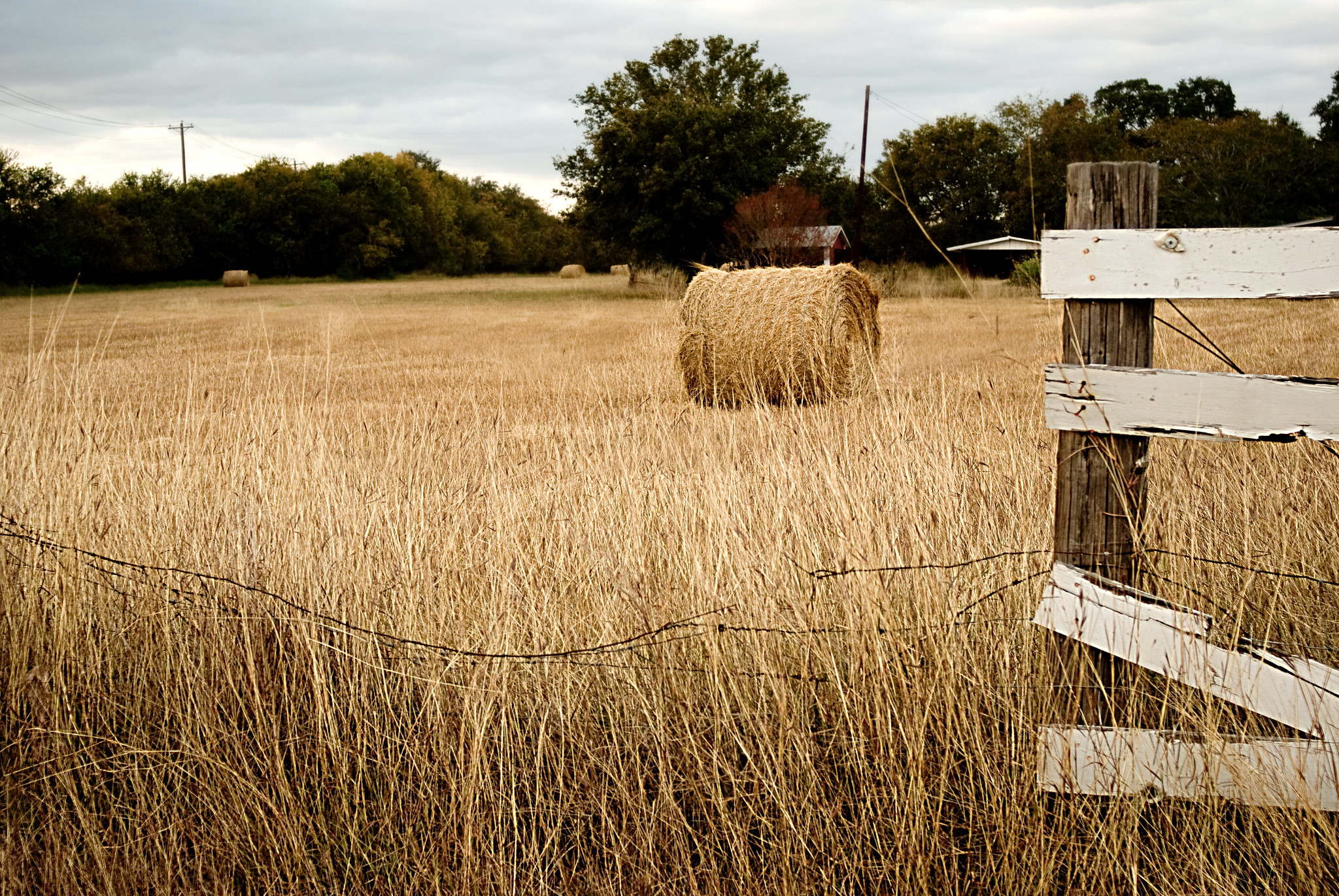Hay inventory in the United States is at a 50-year low, according to a federal agriculture statistics agency. Drought and a spike in fertilizer prices are largely to blame.
Vanessa Corriher-Olson, a professor and extension forage specialist in the Department of Soil and Crop Sciences at Texas A&M University, spoke to the Texas Standard about the shortage’s impact on farmers and ranchers in Texas.
This transcript has been edited lightly for clarity:
Texas Standard: Tell us why there’s so little hay out on the landscape right now. What’s driving this?
Vanessa Corriher-Olson: Unfortunately, our year, our hay season for 2022 was very challenging – along with drought conditions in the majority of our state of Texas, we also had high fertilizer prices.
This is going to have ripple effects down the line. How have ranchers been affected by this shortage of hay?
So at this time of year, it’s difficult to plant anything. We’re basically in the middle of winter. So for folks that didn’t plant any winter pasture last fall, they’re kind of in a bind or may possibly be in a bind because of hay availability, or just what’s available might be low in nutritive value or may not meet the needs of their livestock. So a lot of folks are kind of scrambling, possibly trying to find hay or trying to look for an alternative to meet the needs of their livestock at this point in the season.
Well, if you can find the hay, how much more are you paying for it? And does it make economic sense to go there?
Well, hay prices do kind of vary depending on where you are in the state. Most hay is likely going to be over $100 a round bale, if not more, in some parts of our state. A lot of round bales of hay can cost a producer to produce, you know, over $160 a bale. So most hay producers, even during a normal season – good growing conditions and moderate fertilizer prices – are probably underselling themselves, selling hay for cheaper price than what it likely cost them to produce.
What has to happen now for hay stocks to get back to normal?
A lot of things. One, our hay meadows have to recover from the drought of 2022. And for some producers, their recovery will take longer than others. It will depend on how those hay meadows were managed during 2022, during the drought, and whether or not they were fertilized at all during 2022 with higher fertilizer prices.
So one of my recommendations at this point as we move forward for those hay producers is to soil test to determine what their nutrient status is and what is needed to promote that desired warm, seasonal perennial and what is going to be needed to boost production if we do have good rainfall this next season in 2023. So rainfall will also be important, but nutrients – nitrogen, phosphorus and potassium – are going to be critical for recovery and production of those hay meadows in 2023.
I’m trying to get a 30,000-foot view of this. What does this mean if hay stocks and prices don’t return to normal? Are we talking about ranches that could go out of business here?
I don’t think it’s necessarily that dire. It is possible it could force some folks to make decisions about their future and ranching. Hopefully, it will make folks reevaluate their management of their forage systems, maybe look at being more thorough or at completing soil test using that very inexpensive process to determine what nutrients are needed for their forage production. And, you know, visiting with county extension agents or, you know, specialists like myself to get recommendations on how to move forward despite fertilizer prices, if they remain fairly high, and making good best management practices and decisions to promote that desired forage and to continue to be productive.
We do live in Texas, so we have to be prepared, and we know that the drought is always a possibility during our summers. And so I’m hoping that moreso our previous situation is going to open up people’s eyes in regards to following best management practices to be more effective with their forage systems, whether we’re in a drought or have good growing conditions; whether we have high fertilizer prices or fertilizer prices come down. So hopefully folks will reevaluate their production systems before they completely get out of the business and see if there’s a way they can make some improvements to be more efficient.













